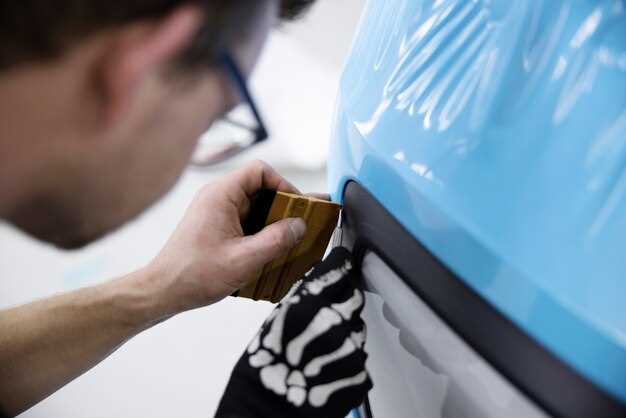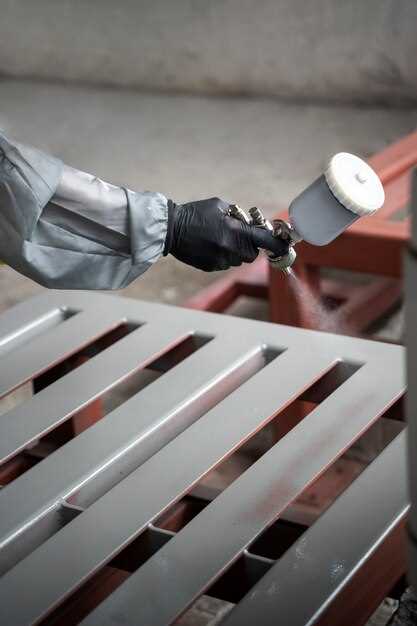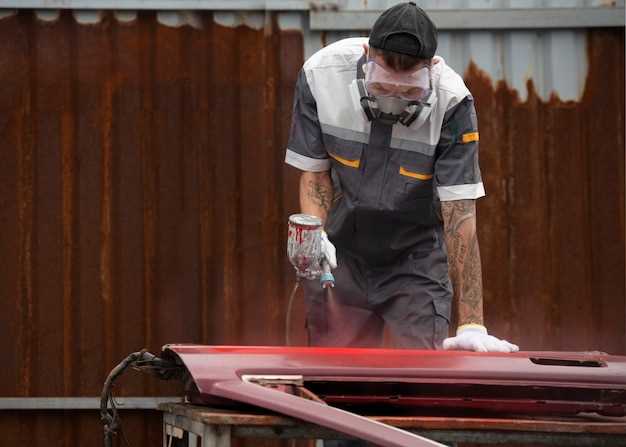
Fiberglass body panels are popular in automotive customization and restoration due to their lightweight and durable nature. However, painting these panels requires specific techniques to ensure a smooth, professional finish. A successful paint job not only enhances the appearance of the vehicle but also provides protection against the elements and wear. Understanding the properties of fiberglass and the appropriate methods for painting it is crucial for achieving optimal results.
Before diving into the painting process, it’s essential to prepare the surfaces correctly. Proper cleaning, sanding, and priming can make all the difference in how well the paint adheres to the fiberglass. Choosing the right paint is equally important; using specialized automotive paints designed for fiberglass can prevent issues like peeling and fading over time. Additionally, implementing the correct application techniques, including the use of spray guns versus traditional brushes, will impact the final look and durability of the paint job.
This article will guide you through essential tips and techniques for painting fiberglass body panels, covering everything from surface preparation to the final clear coat application. By following these guidelines, you can achieve a finish that not only looks fantastic but stands the test of time.
Choosing the Right Paint and Primer for Fiberglass
Selecting the appropriate paint and primer for fiberglass body panels is essential for achieving a durable, long-lasting finish. Fiberglass surfaces have unique properties that require specific products to ensure proper adhesion and appearance.
When it comes to primer, it is crucial to use a high-quality primer specifically formulated for fiberglass. Epoxy primers are often the best choice as they provide excellent adhesion to fiberglass and create a solid foundation for the paint. Additionally, they offer protection against moisture and environmental damage, which is vital for fiberglass components.
Before applying the primer, ensure that the fiberglass surface is clean, dry, and free from contaminants. Sand the surface lightly to promote better adhesion, using a fine-grit sandpaper. This step is essential to create a rough texture that the primer can grip. After sanding, wipe the surface with a suitable cleaner to remove any dust or grease.
Once the primer has been applied and has cured according to the manufacturer’s instructions, it’s time to select the paint. Acrylic urethane paints are highly recommended for fiberglass since they provide a durable and flexible finish. They resist chipping and fading, making them ideal for areas exposed to harsh weather conditions.
It is vital to consider the paint’s compatibility with the primer. Always choose paints that are designed to work with the type of primer used, as this will minimize the risk of peeling or bubbling. Before application, test the paint on a small, inconspicuous area of the fiberglass to ensure compatibility and desired color.
When applying paint, use a proper spray technique to achieve an even coat. Multiple thin layers will yield better results than one heavy coat, reducing the chances of runs and drips. Allow adequate drying time between coats, and follow the product’s recommendations for curing times before exposing the painted surface to stress or environmental factors.
In summary, using the right primer and paint for fiberglass body panels involves selecting high-quality products specifically designed for this material. Proper surface preparation and application techniques are crucial to ensuring a durable and aesthetically pleasing finish.
Surface Preparation: Cleaning and Sanding Techniques

Proper surface preparation is crucial for achieving a smooth and durable finish on fiberglass body panels. The effectiveness of paint adherence largely depends on how well the surface is cleaned and sanded. Follow these techniques for optimal results.
1. Cleaning the Surface
Start by thoroughly cleaning the fiberglass panels to remove any dirt, grease, and contaminants. Use a detergent solution mixed with water and a soft cloth or sponge to scrub the surface. It’s essential to rinse the area with clean water afterward to remove any soap residue. For stubborn contaminants, consider using a solvent like acetone or isopropyl alcohol, applying it with a lint-free cloth. Always ensure the area is well-ventilated when using solvents.
2. Drying the Surface
After cleaning, allow the fiberglass panels to dry completely. Moisture can interfere with paint adhesion and cause peeling or bubbling in the finished product. A combination of air drying and using a clean, dry microfiber cloth can expedite this process.
3. Sanding Techniques
Sanding is a critical step to create a suitable surface texture for paint application. Begin with a finer grit sandpaper (around 220-grit) to carefully scuff the surface. This process helps to create small grooves that promote paint adhesion. Sand in a consistent, circular motion, avoiding excessive pressure to prevent gouging the fiberglass.
For areas with existing paint or imperfections, start with a coarser sandpaper (around 120-grit) to remove defects before transitioning to a finer grit for finishing. Be mindful to sand edges and contours evenly, maintaining a uniform surface throughout.
4. Final Cleaning After Sanding
Once sanding is complete, perform another thorough cleaning. Use a vacuum to remove dust particles followed by wiping the surface with a tack cloth. This step ensures that any remaining dust is eliminated before paint application, leading to a flawless finish.
By adhering to these surface preparation techniques, you can significantly enhance the quality and longevity of your paint job on fiberglass body panels.
Application Methods: Spray Gun vs. Roll-On Techniques

When it comes to painting fiberglass body panels, choosing the right application method is crucial for achieving a smooth and professional finish. Two popular techniques are using a spray gun and roll-on application. Each method has its unique advantages and considerations.
Using a spray gun is widely favored for larger surfaces and intricate designs. This method provides even coverage and can reach difficult areas that rollers may miss. Spray guns allow for precise control over the application speed and paint thickness, enabling a flawless finish. Proper ventilation and personal protective equipment (PPE) are essential when using spray guns due to the potential for inhaling fumes and overspray. Additionally, practice is recommended to master the technique, as inexperienced users may unintentionally create runs or uneven surfaces.
On the other hand, roll-on techniques are simpler and can be more accessible for DIY enthusiasts. This method involves using a roller to apply paint, which can be less intimidating for those new to painting. Roll-on techniques can also be effective for covering large flat areas quickly. While it may not achieve the same level of finish quality as a spray gun, when done carefully, it can still result in a decent appearance. One disadvantage is that rollers may leave texture on the surface, which can require additional sanding or finishing work. Additionally, achieving uniform color might be trickier compared to a spray application.
In summary, the choice between spray gun and roll-on techniques for painting fiberglass body panels depends on the specific requirements of the project, the skill level of the painter, and the desired finish quality. For those seeking a high-gloss, smooth result, a spray gun is typically the preferred option. Alternatively, for quick jobs or when cost is a factor, roll-on methods may be entirely adequate.












